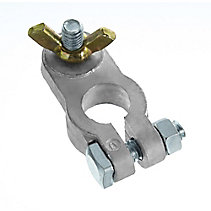This fall I purchased a second hand set of wheels to use for winter tires for the new station wagon. When I got them - they were quite badly encrusted in brake dust, I'm not sure if the previous owner ever cleaned them. Pressure washer and aluminum wheel cleaning products barely touched the brake dust stains. I then took it up a notch - and scrubbed the wheels with lacquer thinner and used terrycloth towels. That was really effective at removing the brake dust stains from the wheels, but you have to be careful - the lacquer thinner will soften the existing finish, and the fumes are hazardous - chemical gloves and a charcoal organic cartridge mask are a must if you're working indoors.
Once the wheels were clean - a new problem quickly became apparent - spots of oxidation underneath the existing finish - the size of quarters. Several per wheel. Not only that, but oxidation around the wheel rims where the tire bead contacts the rim. This oxidation will eventually cause air leaks and would have to be removed.
I decided not to completely strip the wheels, but to do a repair job and spot refinishing. That consisted of buffing out the oxidized areas with a 2" buffing wheel on a die grinder, and a sandpaper wheel on a dremel for tighter areas.
Next step was to prime the buffed out spots where I removed the oxidation to the bare metal. I used automotive self etching primer, decanted to an airbrush bottle and an airbrush for better control and even application. If you don't have an airbrush, you could mask and spray from the can, or decant and apply the primer with a brush. Here's a photo of the primer used, and the spot priming:
Once the spot priming was done, I decided to paint the interior of the wheel - silver metallic and clear. I did this before painting the fronts of the wheels, so that overspray would be less of a problem. I started by masking off the front of the wheel from the back:
I decided to go with a Lacquer paint system. These wheels were originally painted with Lacquer, so I was confident I'd have good compatibility. Plus - the recoat times with lacquers are extremely flexible - from 15 minutes to any time. From what I've found online, acrylic enamels are becoming more prevalent, probably due to tightening VOC emissions regulations. I went with the recoat flexibility - because with a couple small kids running around, and limited time to dedicate to painting, I could do some several evenings in a row and not have to finish all coats in the same day. I used duplicolor spray lacquer with these wheels - seems to be a very good product. Available at Canadian Tire - about $10 a can.
Three coats of colour, and three coats of clear - on the inside of the wheels, and the bead surfaces. I did all the coats of colour in one evening, then waited 24 hours, and did the three coats of clear the next evening. After that, it was on to the fronts of the wheels.

On the fronts of the wheels I gave up on the spot repair also. Since they are winter wheels, I didn't dedicate much time to level out the areas where I sanded - I just feathered the clearcoat back some so that the edges wouldn't be too jagged. I also sanded all surfaces to roughen them for paint adhesion. Since I was worried about the etching primer raising existing paint, I used a sandable primer over the existing finish (photo above). This sandable primer was a bit darker than I expected, I was hoping to keep everything light so that dings and scratches won't show through. By the way - I picked up the Rustoleum spray can trigger at home depot - this is the way to go. Each set of wheels took about one can of primer, three cans of colour, and two to three cans of clear.
The finish turned out good - I applied colour about half an hour after the primer, and three coats about 15 minutes apart. Waited a day, and onto the clear.

On two of the wheels, I applied the clear a bit too thick, and the solvents in the clear lacquer redissolved some of the colour layer. Once that happens, you pretty well have to start over. You can wipe clean with lacquer thinner and restart. I was pressed for time and just left it as is - not too noticeable, especially on wheels that will be crusted in salt most of the winter.
I'll do another post on my outback wheels - which I stripped down to the aluminum using paint thinner. Those wheels turned out a bit better than these, and it didn't take any more time to strip the wheels down, compared to all the time spend cleaning, wiping with lacquer thinner, and sanding these wheels. If I was going to do it again, I would just strip them completely before starting...



























